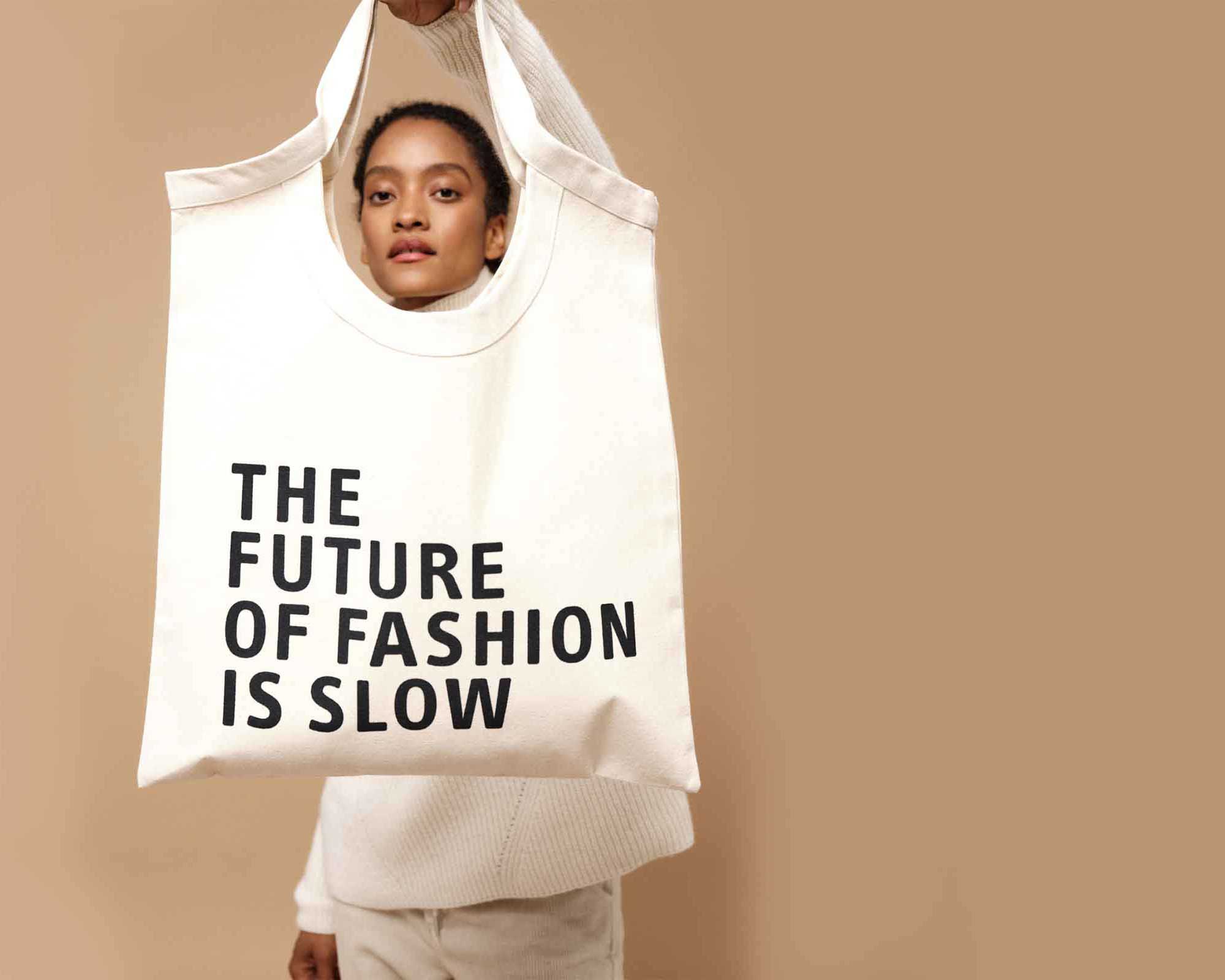
Remember when “sustainable fashion” meant shapeless hemp dresses and bland basics? Those days are long gone. Today, slow fashion is redefining luxury, and the numbers speak volumes: the sustainable fashion market was projected to reach $8.25 billion by 2024.

Here’s how leading brands are revolutionising the industry:
Patagonia continues to set the gold standard. Their “Worn Wear” program repairs 100,000+ items annually, while their transparent supply chain has become a blueprint for the industry. Plus, who can forget their bold “Don’t Buy This Jacket” campaign?
Stella McCartney proved that luxury and sustainability aren’t mutually exclusive. By pioneering mushroom leather and recycled ocean plastics in high-end fashion, she’s shown that innovation can drive both style and sustainability.
Reformation took transparency to the next level. Each garment comes with its own “RefScale” impact score, showing exactly how much CO2, water, and waste was saved in production. Their factories? You can literally tour them virtually.
Even traditional players are adapting:
Levi’s Water<Less technology has saved over 4.2 billion liters of water in jean production
H&M’s Conscious Collection now uses 100% recycled or sustainably sourced materials
Nike’s Move to Zero initiative aims for zero carbon and zero waste
But here’s what’s really exciting: Small, independent brands are driving the biggest innovations.
Companies like Everlane (radical transparency), Vetta (capsule wardrobes), and Outerknown (circular design) are proving that you don’t need to be a fashion giant to make a massive impact.
The shift isn’t just about materials and manufacturing. It’s about changing how we think about fashion altogether. Rental platforms like Rent the Runway and resale marketplaces like ThredUp are making sustainable fashion more accessible than ever.
Here’s the bottom line: Slow fashion isn’t just a trend – it’s a complete transformation of a $2.5 trillion industry. And for those of us in business, it’s a masterclass in how sustainability can drive innovation, customer loyalty, and bottom-line growth.
What’s your take on this shift? Have you embraced slow fashion in your wardrobe?
By Mehdi Mabrouk, Head of Partnerships & Communication, BUREAU BÉATRICE









